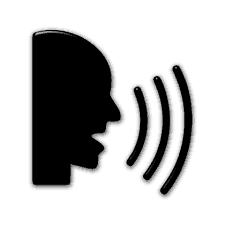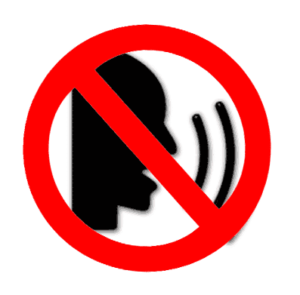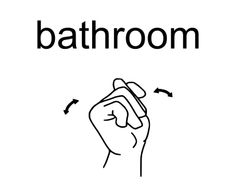When we receive a child with selective mutism on our caseload we are often at a loss for what to do first. Here are 6 ways to get the communication rolling and some resources for us and the parents at the bottom.
This generally describes a student with Selective Mutism:
|
|
Before diving into interventions, let’s briefly chat about some main points about selective mutism (SM). SM is a complex anxiety disorder that affects fewer than 1% of children. In most cases, social anxieties and phobias are also associated with those with SM. So, what does this mean for us as SLPs? This means that assessment and treatment of selective mutism is only successfully addressed through a team. In other words, you get to support your child alongside folks who are counselors, licensed specialists in school psychology (LSSP), pediatricians, psychologists or psychiatrists. This also means that the lack of verbal communication is not an indicator of a communication disorder. Remember, it’s an anxiety disorder. So, you need to find ways to assess the child’s speech and language. Tune in next week for the much anticipated Selective Mutism Evaluation Report Text – Ooohhh!
Now, let’s get to the intervention part! We know this it is controversial as to whether an SLP should be intervening when an emotional disturbance is the cause of the communication difficulty. One camp suggests that it is outside of our area of expertise while the other side notes that we are the communication experts and who better than us to usher a student through the system. Both ideas have their merits. However, we must be involved to evaluate whether a communication issue is present and then we definitely can play a huge role helping the child and in bringing counselors, schools, and parents up to speed.
Your job as an SLP is to unite the environment where the speaking is taking place with the silent environment. Remember, a part of treatment for selective mutism is removing expectations and pressure for the child to speak. So, we do this by having the reward systems bleed over into both environments, bringing members from the speaking environment into the non-speaking environment, and meeting a students most pressing needs without verbal communication.
6 ideas to begin communication with selective mutism
Remember: as you are collecting data you are looking for increasing in communication, not just speech. If you are only counting verbalization you are going to be disappointed. The non-verbal communication becomes robust before the words set in.
- Self-Modeling Have the child watch videotapes of himself speaking (e.g., at home) to encourage confidence and potentially carry over this behavior into other environments
- Invite the father or mother into the classroom Have Mother remain in classroom along with student before or after school one day. Have everyone else leave and instruct the mother to work on homework or play a game. Something that involves talking. This is intended to get him used to speaking in the school setting. Eventually add in teacher to the setting after he is accustomed to talking in the room.
- Invite a friend to speech therapy Invite a close friend to come to speech therapy to play a game. As the SLP, decrease anxiety by becoming a bystander (e.g., focus on another activity, focus eye contact away from the child, etc.)
- Expression of yes/no Use color coded yes/no cards to indicate answers accompanied by head nod/shake. Mom will encourage head nod/shake with verbal response at home.
- Communication in all forms, please! Gesturing, whispering, writing and mouthing are ways to potentially increase communication without the anxiety.
For example, you can do a sign for going to the bathroom. Cross his fingers and hold them up to indicate bathroom.
- Give Responsibilities Give student “leader” tasks to help, participate, and demonstrate knowledge. This can include handing out papers, counting, dividing objects by type, etc.
Selective Mutism Video in Spanish
For those of you who speak Spanish (and for those that do not) this is extremely cool:
Will some savvy SLP please produce something like this in English? Way cool.
Tune in next week for the much anticipated Selective Mutism Evaluation Report Text – Ooohhh!
Resources on Selective Mutism
Selective Mutism Disorder, Description, and Characteristics
Websites:
References:
- Selective Mutism (n.d.). In A.D.A.M. Medical Encyclopedia online. Retrieved from: https://www.ncbi.nlm.nih.gov/pubmedhealth/PMH0002513/
- Frequently Asked Questions about Selective Mutism. (n.d.). Selective Mutism Group. Retrieved from: https://www.selectivemutism.org/faq


 Speaks
Speaks Does not speak
Does not speak For example, you can do a sign for going to the bathroom. Cross his fingers and hold them up to indicate bathroom.
For example, you can do a sign for going to the bathroom. Cross his fingers and hold them up to indicate bathroom.

The video (in Spanish) doesn’t work any more. (I watched it last year and loved it, but now it says it’s private when you click on it to play it, and it is no longer playable on YouTube, either. Wanted to show it to a bilingual student with SM today… 🙁
Thank you for pointing that out. We linked to that video on Youtube and the owner/author pulled it down. I did some research and found some other good ones. I replaced the video with another one. By searching “mutismo selectivo” in YouTube there are about 8 videos now that are helpful.